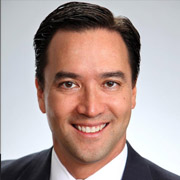The subject of CAM/operating expense “gross up” clauses in commercial leases has been written about, explained and defended in countless commercial real estate leasing articles, treatises, textbooks, and professional educational programs. And yet, the “gross up” concept continues to be misunderstood, and to confuse, perplex, and vex commercial leasing professionals engaged in drafting and negotiating commercial leases. Tenants and their counsel continue to cry foul, arguing that CAM gross up clauses produce unfair windfalls to the landlord, and/or unfairly shift the landlord’s vacancy risks to the tenant. Accordingly, as a public service to commercial leasing professionals, this will constitute yet another article on the subject and hopefully serve as a helpful “re-primer” on CAM gross up provisions—their rudiments, the rationale behind them, how they function in practical reality, and why it is fair for landlord’s to require them (and, correspondingly, why they are not fundamentally unfair to tenants).
Tenants and their counsel continue to cry foul, arguing that CAM gross up clauses produce unfair windfalls to the landlord, and/or unfairly shift the landlord’s vacancy risks to the tenant.
A. Basics of Net Leases and Pass Through of CAM Expenses
First, the basics. Many commercial leases (and especially office and retail leases) are variants of a “net” lease, where the landlord passes its property operating expenses through to the tenants, each of whom must reimburse the landlord a proportionate share of the landlord’s operating expenses. Thus, in a simple example, if four (4) tenants in a commercial office building each occupy 25% of the rentable space in a building, then each tenant must pay 25% of the landlord’s operating expenses. The fundamental economics of a “net” lease are to ensure the fixed rent payable by the tenant will constitute profit to the Landlord—i.e., “net” of the costs and expenses that the Landlord will incur in operating the building and providing the various leasing services to the tenants.
The landlord’s “operating expenses” will generally include the costs incurred by the landlord in maintaining, repairing, operating and insuring the overall building and property, and will specifically include costs for such things as cleaning/janitorial services, facility maintenance costs, garbage disposal, snow and ice removal from exterior sidewalks, driveways and parking areas, HVAC service contracts, insurance premiums, and utilities. Because many of these operating expenses are costs for maintaining the common areas of the property (e.g. building lobbies, hallways, common bathrooms, exterior sidewalks, parking areas, landscaping areas, etc.) they are often called, or referred to, as “common area maintenance” expenses (or “CAM” expenses, for short).
Accordingly, using our simple example above: if the Landlord’s annual operating/CAM expenses are (for simplicity) $100.00, then each of the four (4) tenants would be charged for their proportionate (25%) share of the CAM expenses—i.e., $25.00 each.
B. CAM “Gross-Up” Provisions—In Simple Terms
Many commercial leases contain so-called CAM “gross-up” provisions that are intended to address the situation where the building is not fully-leased. For instance, if the building in our simple example above was only leased to three (3) tenants who collectively made up 75% of the building rentable area, the remaining 25% of the building would be vacant. Because of the decreased occupancy, certain of the CAM expenses that are tied to occupancy levels would be lower. For instance, janitorial costs would be less because the janitorial vendor would only be cleaning 75% of the building (not 100 %), and utility costs would be lower because a smaller number of tenants would be consuming electricity, water and other utilities. For purposes of this discussion, assume that as a result of the lower (75%) occupancy in the building, the landlord’s CAM expenses were correspondingly reduced to $75.00.
In simple terms, the CAM “gross up” clause provides that in circumstances where the building is not 100% leased, the landlord may “gross up” the actual CAM expenses to an amount that would reflect 100% occupancy. Put another way, the landlord would have the right to artificially inflate the CAM expenses to an amount that they would have been if the building was 100% leased. Applying this to our simple example where the building is only 75% leased, and the actual CAM expenses are $75.00—the landlord would be able to artificially inflate the CAM Expenses to $100.00, and then charge each of the three (3) tenants 25% of that artificially inflated figure. Thus, each tenant would be charged $25.00 (as 25% of artificially inflated $100.00 of CAM expenses), rather than $18.75 (as 25% of the actual $75.00 of CAM expenses).
If you are new to commercial leasing, or are a veteran to whom the gross up concept was explained a long time ago (and that explanation has long since faded from memory), your blood is boiling right now. If the CAM expenses were only $75.00, how could the landlord get away with charging the tenants $100.00 (and, quite obviously, pocketing the extra $25.00)??!! You are outraged and decrying the injustice of greedy landlords overcharging their tenants and creating artificial profit centers for themselves.
C. The Rationale Behind “Gross-Up” Provisions and Their Practical Operation
Any explanation of the rationale behind CAM gross up clauses must start with a restatement of the fundamental economics of a “net” lease. Again, the purpose is to pass through the CAM expenses to the tenants, so that the fixed rent payable by the tenants will be “net” profit to the landlord. If the tenants do not reimburse the landlord for 100% of those CAM expenses, then the landlord would end up having to absorb the unreimbursed portion of those CAM expenses. In that case, the landlord would be forced to apply a portion of the fixed rents to payment of the unreimbursed CAM expenses; thus the fixed rents would not end up being “net” to the landlord. Quite simply, the landlord would not be getting the fundamental economic benefit of the lease deal.
In the hypothetical example above (in the absence of a CAM gross up clause), the tenants would not end up paying 100% of the actual CAM expenses, and the landlord would end up having to absorb the unreimbursed CAM expenses. To play this out—if the actual CAM expenses were $75.00, and the three (3) tenants only paid their 25% share on that actual $75.00, then each tenant would end up paying $18.75. This would mean that the total reimbursement to the landlord would amount to only $56.25 (not $75.00), thus leaving a shortfall of $18.75. If the landlord had to absorb that shortfall then (again) the landlord would not be getting the “net” rent for which he had bargained.
In practical application, the CAM gross up clause operates to eliminate this shortfall, without producing an inappropriate windfall to the landlord. To play this out in our simple hypothetical above: the $75.00 in actual CAM expenses would be inflated to $100.00 only for purposes of calculating each tenant’s proportional share of the CAM expense. Each of the three (3) tenants would be charged 25% of inflated $100, or $25.00 each, and thus would end up collectively paying $75.00—i.e., the full amount of the actual $75.00 CAM expenses, no more, and no less.
Thus, by grossing up the actual CAM expenses to $100.00 (to replicate the CAM expenses of a 100% leased building), the Landlord would not end up collecting more money from the tenants than is needed to cover the actual CAM expenses. Rather, the gross up clause effectively enables the Landlord to ensure that the actual CAM Expenses (in a building that is not fully leased) are spread across, and paid 100% collectively by, the tenants in the building who are getting the actual benefits of the services and maintenance that the landlord is providing and performing.
D. The Distinction Between “Fixed” and “Variable” CAM Expenses
Still, tenant’s counsel often argue that the gross up clause unfairly shifts the landlord’s vacancy risk onto the other tenants of the building. The tenants have agreed to pay their proportionate share of the CAM expenses, and the lease should reflect just that—in our simple example, each of the three (3) tenants should only pay 25% of the actual $75.00 in CAM expenses. While that calculation would (as shown above) result in the landlord not collecting the full $75.00 to cover its actual CAM expenses, the shortfall is attributable to the vacant space in the building. Tenant’s counsel may argue that it should not be the responsibility of the tenants to “pick up the slack” for the CAM expenses attributable to the vacant space; if the landlord is not successful in leasing the full building, then the landlord should shoulder the burden of CAM expenses attributable to the vacant space. That is part of the landlord’s ownership and investment risk.
This argument brings into play an important distinction between CAM expenses that are deemed “fixed”, and those that are deemed “variable” depending on the occupancy levels in the building. For instance (as discussed above) janitorial costs and utility costs are expenses that go up and down depending on the level of occupancy (the more space that is leased, the more tenant spaces the janitorial vendor needs to clean). In contrast, the landlord’s insurance premiums are fixed—the landlord has to pay the same amount of premium, regardless of whether the building is 100% leased or 10% leased. Similarly, if the landlord has engaged an HVAC service contractor to service the building’s central/common HVAC systems, the service charges will be the same regardless of how many, or how few, tenants actually occupy the building.
Landlords argue that the “variable” CAM expenses are, by their nature, expenses for services that are (for the most part) consumed by, or for the benefit of, the existing tenants of the building, and thus 100% of those costs should be reimbursed by the tenants. For example, if the janitorial vendor is essentially only cleaning the spaces of the tenants who are in occupancy, then the landlord should not have to shoulder a portion of those janitorial costs attributable to the vacant space (which is not being cleaning on a daily basis like the existing tenant spaces). In contrast, landlords often concede that, as to fixed expenses (such as insurance) that do not vary with occupancy and are not attributable only to the actual tenants of the building, the landlord will shoulder the proportionate share attributable to the vacant space. Accordingly, a common compromise is to tailor the CAM gross up clause to apply only to CAM expenses that vary with building occupancy (thus, other fixed CAM expenses would not be grossed up).


